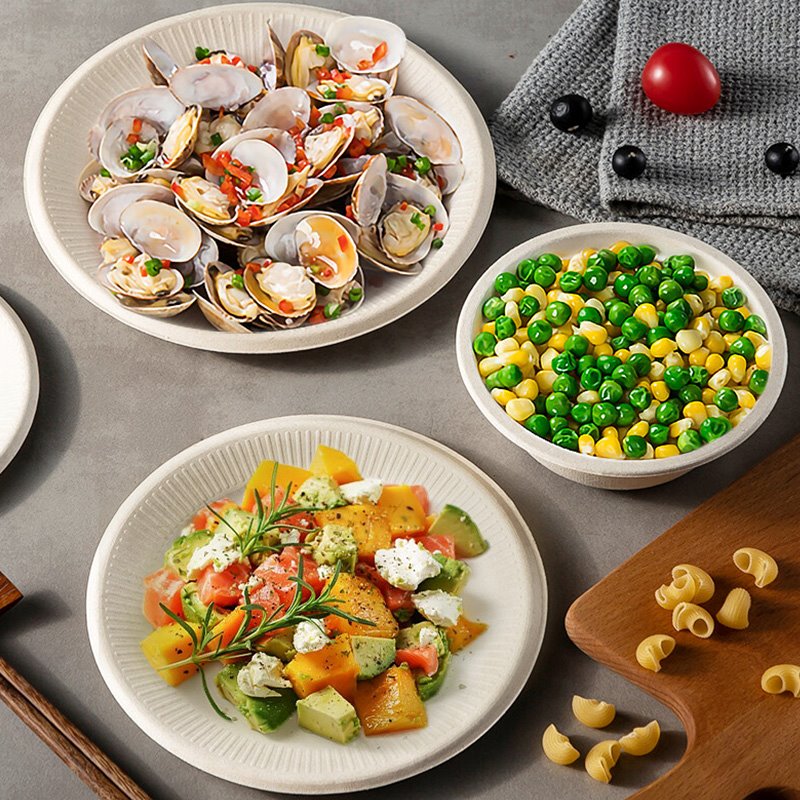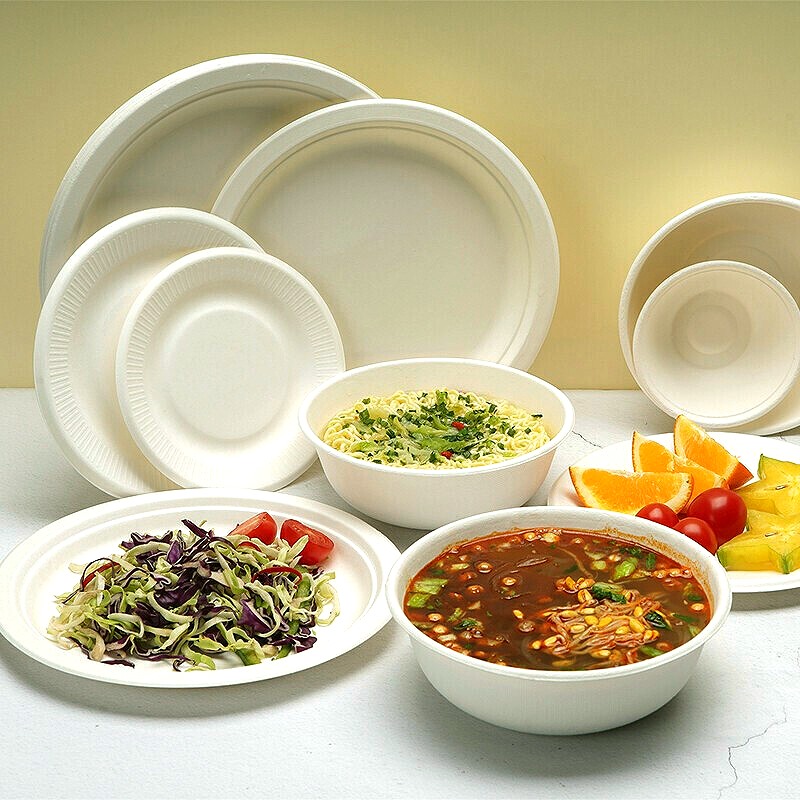In recent years, with the growing concern for environmental protection, the eco-friendly tableware industry has witnessed significant growth. This article aims to analyze the development trends of the global eco-friendly tableware industry and highlight the position of bagasse tableware within it. Additionally, it will introduce the situation of other bagasse tableware producers at home and abroad and conduct industry comparisons. Moreover, it will focus on the impact of relevant policies and regulations on eco-friendly tableware, such as the restriction policies on plastic tableware in some countries. Finally, it will predict the future development direction of the bagasse tableware industry and provide industry insights for readers.
I. Development Trends of the Global Eco-Friendly Tableware Industry
The global eco-friendly tableware industry is on an upward trajectory. Consumers are increasingly aware of the environmental impact of traditional plastic tableware and are actively seeking sustainable alternatives. This has led to a surge in demand for eco-friendly tableware made from materials such as bagasse, bamboo, and wheat straw.
The industry is also driven by technological advancements. Manufacturers are constantly innovating to improve the quality and performance of eco-friendly tableware. For example, new production processes are being developed to make bagasse tableware more durable and heat-resistant.

Furthermore, the growing popularity of online shopping has made it easier for consumers to access eco-friendly tableware. Online platforms offer a wide range of products and provide detailed information about their environmental benefits, making it convenient for consumers to make informed choices
II. Position of Bagasse Tableware
Bagasse tableware has emerged as a prominent player in the eco-friendly tableware industry. Made from the waste material of sugarcane processing, bagasse tableware is biodegradable, compostable, and renewable. It offers a sustainable alternative to traditional plastic tableware and helps reduce environmental pollution.

Compared to other eco-friendly materials, bagasse tableware has several advantages. It is lightweight, yet sturdy and durable. It can withstand high temperatures and is suitable for use in microwaves and ovens. Additionally, bagasse tableware is cost-effective and can be produced in large quantities.
III. Industry Comparisons
In addition to bagasse tableware, there are other eco-friendly tableware producers in the market. Bamboo tableware is another popular option. It is known for its natural beauty and durability. However, bamboo tableware may require more processing and is relatively more expensive than bagasse tableware.
Wheat straw tableware is also gaining popularity. It is lightweight and biodegradable. However, it may not be as durable as bagasse tableware and may have limitations in terms of heat resistance.
Overall, bagasse tableware stands out for its combination of sustainability, durability, and cost-effectiveness. It offers a competitive alternative to other eco-friendly tableware products.
IV. Impact of Policies and Regulations
Many countries around the world have implemented policies and regulations to limit the use of plastic tableware. These measures are aimed at reducing plastic waste and promoting the use of eco-friendly alternatives. For example, some countries have banned single-use plastic straws and bags, while others have imposed taxes on plastic tableware.
These policies have had a significant impact on the eco-friendly tableware industry. They have created a favorable market environment for bagasse tableware and other sustainable alternatives. As more countries adopt similar measures, the demand for eco-friendly tableware is expected to continue to grow.

V. Future Development Direction
Looking ahead, the bagasse tableware industry is poised for further growth. As consumers become more environmentally conscious and demand for sustainable products increases, bagasse tableware is likely to gain wider acceptance.
Manufacturers are expected to continue to innovate and improve the quality and performance of bagasse tableware. They may also explore new markets and applications, such as in the food service and hospitality industries.
In addition, collaborations between manufacturers, retailers, and government agencies can help promote the use of bagasse tableware and raise awareness about its environmental benefits.
In conclusion, the global eco-friendly tableware industry is experiencing rapid growth, and bagasse tableware is playing an important role in this transformation. With its sustainable properties, competitive advantages, and growing market demand, bagasse tableware is set to become a mainstream choice for consumers in the future.